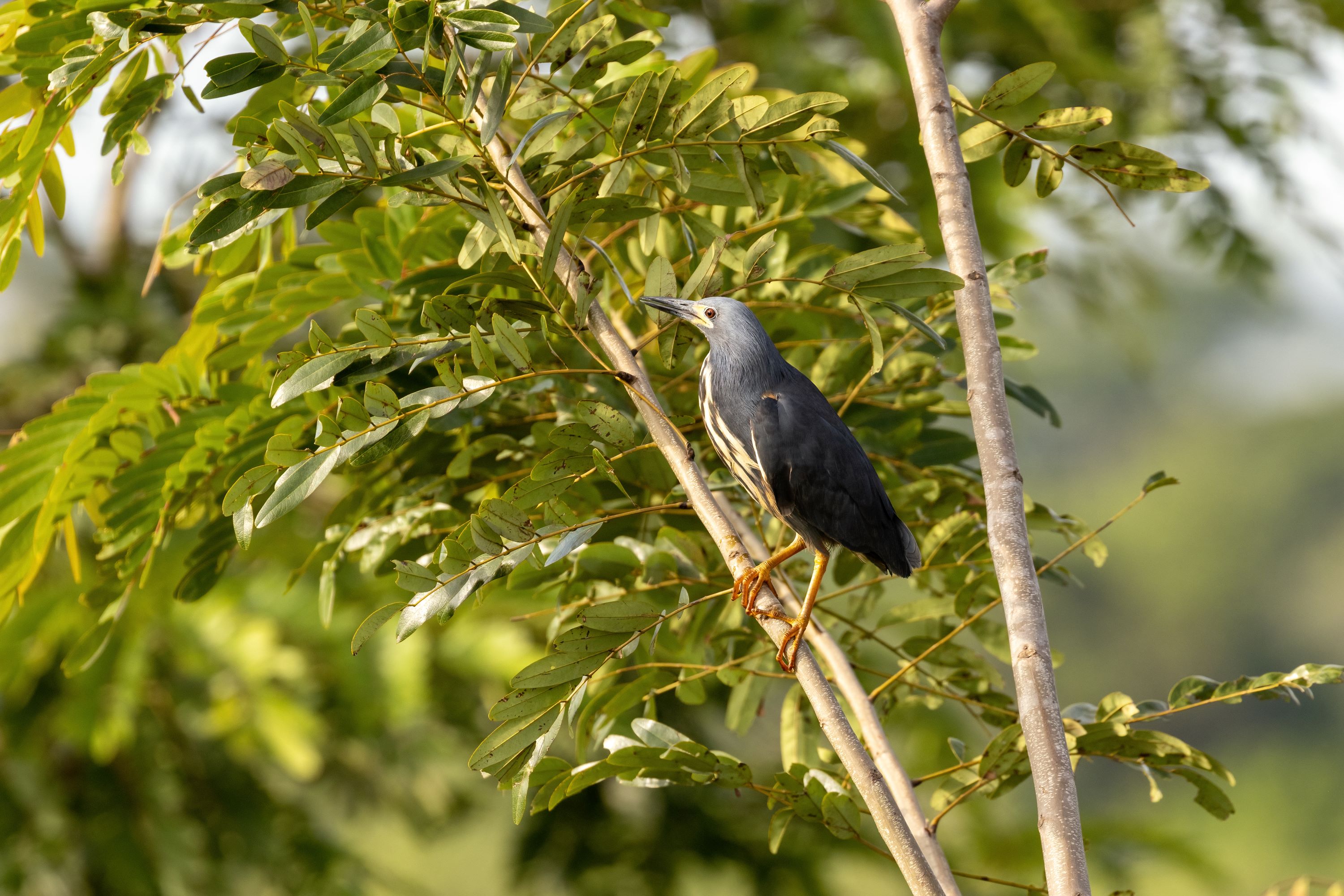
Dwarf Bittern: The Petite Marshland Hunter
Introduction to the Dwarf Bittern
The Dwarf Bittern, scientifically named Ixobrychus sturmii, is a small heron that dwells in the marshes and wetlands of Africa. As one of the smallest members of the heron family, Ardeidae, it is distinguished by its compact size and unique hunting habits, which make it an interesting species for avian enthusiasts.
Physical Description
The Dwarf Bittern is a small bird, measuring only about 25-30 cm in length, with a wingspan of approximately 45 cm. It has a squat, robust body, a short neck, and a stout bill typical of bitterns. The plumage is predominantly brown with a mottled pattern, providing excellent camouflage in its habitat. Males and females have similar coloration, but juveniles may exhibit a paler, more streaked appearance.
Habitat and Distribution
This bittern is native to sub-Saharan Africa, with its range extending from Senegal and Ethiopia down to South Africa. It inhabits freshwater marshes, swamps, and the dense vegetation surrounding rivers and lakes. The Dwarf Bittern prefers environments with ample hiding spots and abundant prey.
Behavior and Lifestyle
The Dwarf Bittern is known for its secretive nature. It is most active at dawn and dusk (crepuscular) but may also hunt at night (nocturnal). During the day, it stays hidden among reeds and vegetation, making it challenging to spot.
Feeding Habits
Its diet consists primarily of small fish, amphibians, insects, and occasionally crustaceans. The Dwarf Bittern uses a patient hunting strategy, waiting motionlessly for prey before striking swiftly with its sharp bill.
Breeding and Nesting Habits
Breeding behavior in the Dwarf Bittern is not well documented, but it is believed to breed during the rainy season. Nests are constructed close to the ground in dense vegetation, often over water. The nests are made from reeds and grasses and are well-concealed.
Egg Laying and Incubation
The female typically lays 2 to 5 eggs, which are pale blue or green. Incubation is primarily undertaken by the female and lasts about 18-21 days. The male may guard the territory but does not usually participate in incubation.
Chick Rearing and Parental Care
The chicks are altricial and depend on the female for feeding and protection. They are fed regurgitated food and begin to explore outside the nest within a few weeks but stay close by for additional care.
Vocalizations and Communication
The Dwarf Bittern is relatively quiet, but it emits low-pitched calls and sounds, especially during the breeding season. These vocalizations are likely used for communication between mates and signaling territory.
Conservation Status
The Dwarf Bittern is currently listed as Least Concern by the IUCN. However, it faces threats from habitat loss and degradation, particularly in the draining of wetlands and changes in land use. Conservation efforts focus on protecting and managing its wetland habitats.
Similar Species and Taxonomy
Belonging to the order Pelecaniformes and the family Ardeidae, the Dwarf Bittern is part of the Ixobrychus genus, which includes several other small bittern species. It shares habitat preferences and behaviors with its Ixobrychus relatives but is distinguished by its smaller size and specific plumage.
The Dwarf Bittern in Utah
The Dwarf Bittern is not found in Utah or anywhere in North America, as its habitat is restricted to Africa. In Utah, bird enthusiasts can observe other members of the Ardeidae family, such as the American Bittern, in suitable wetland habitats.
Conclusion
The Dwarf Bittern, Ixobrychus sturmii, is an intriguing and lesser-known member of the wetland bird community. Its small size, secretive nature, and specialized habitat preferences make it a unique species within the heron family. Protecting the wetland habitats of the Dwarf Bittern is essential for its survival, underscoring the importance of wetland conservation efforts worldwide.